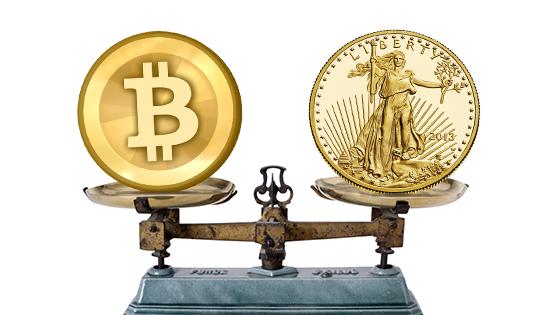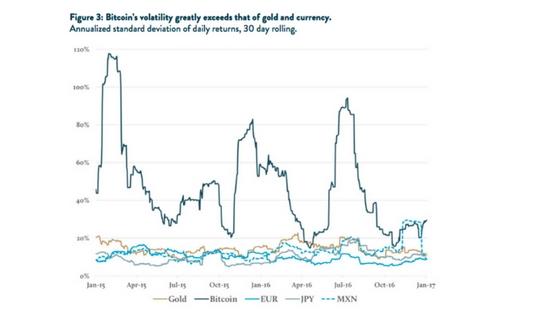
On Thursday Bitcoin gained parity with gold for the first time, only to surpass it shortly after. The cryptocurrency reached a high of $1281.21 by 1 p.m. EST on the BTCUSD exchange, according to MarketWatch. The mainstream media is likely to hype the story, inspiring many to sing the praises of Bitcoin as a better investment than gold or other precious metals.
But before you trade your gold coins or silver bullion for Bitcoin, remember that cryptocurrencies have little in common to precious metals when it comes to value and volatility. Goldmoney contributor, Stefan Weiler, explains the problems of comparing precious metals vs cryptocurrencies.
Real vs. Abstract Units
The main value difference is that gold and silver have the advantage of being real, physically measureable natural elements as opposed to abstract, man-made currencies, which includes fiat currencies. Consequently, gold and silver have mass and weight measureable to determine their units (grams, troy oz, etc.). Bitcoin doesn’t have this characteristic. Weiler makes the point that an “abstraction can only be measured in units of itself.” So “weighing” Bitcoin’s value against gold is literally impossible.
Weiler articulates the problem with a strict comparison of units between Bitcoin and gold: “when comparing units of gold to units of Bitcoin, one must first define what unit it is measured against. Is it grams…kilograms…or tonnes? Or are we measuring it in the rather obscure measure of troy ounce…?”
Weiler uses the market capitalization of two companies (Apple (NASDAQ:AAPL) and Seaboard Corp (NYSEMKT:SEB)) as an analogy to illustrate how unit size/amount can misrepresent prices:
Comparing the price of 1 Bitcoin vs 1 troy ounce of gold is a little bit like comparing the shares of Seaboard Corp. (USD 4,179 per share) to those of Apple Inc. (USD 116 per share) and concluding that Seaboard Corp is worth 35 times as much.
Considering only the price of both companies’ stocks, rather than including the issued stocks (i.e. units) when measuring overall value leads to a misrepresentation of value. Weiler argues a similar distortion occurs when comparing gold and Bitcoin.
Downside Volatility Risk
Cryptocurrency proponents see it as the medium of exchange and store of value for the future. However, there are problems with Bitcoin’s volatility when measuring just the downside deviations as opposed to the standard deviation. The approach “provides a better idea of the risks” of Bitcoin for becoming as widely adopted as money, Weiler states.
In his analysis, Weiler determines that “Bitcoin’s volatility significantly exceeds that of both gold and currency,” adding that “at times, Bitcoin’s volatility declines for a short period and can even approach the volatilities of gold and currency, but tends to shoot up violently shortly thereafter.”
Such volatility makes it hard for merchants who may want to exchange Bitcoin for currency after a transaction. The downtime for exchange can take an hour, exposing retailers to this downside risk in the interim.
Even given how impressively Bitcoin has performed given its short existence, it still has serious limitations with respect to utility and as a store of wealth when compared to gold and precious metals. Keep this in mind before giving in to the temptation to trade in your gold coins for Bitcoins.

TheBitcoinNews.com – Bitcoin News source since June 2011 –
Virtual currency is not legal tender, is not backed by the government, and accounts and value balances are not subject to consumer protections. TheBitcoinNews.com holds several Cryptocurrencies, and this information does NOT constitute investment advice or an offer to invest.
Everything on this website can be seen as Advertisment and most comes from Press Releases, TheBitcoinNews.com is is not responsible for any of the content of or from external sites and feeds. Sponsored posts are always flagged as this, guest posts, guest articles and PRs are most time but NOT always flagged as this. Expert opinions and Price predictions are not supported by us and comes up from 3th part websites.
Advertise with us : Advertise
Our Social Networks: Facebook Instagram Pinterest Reddit Telegram Twitter Youtube











